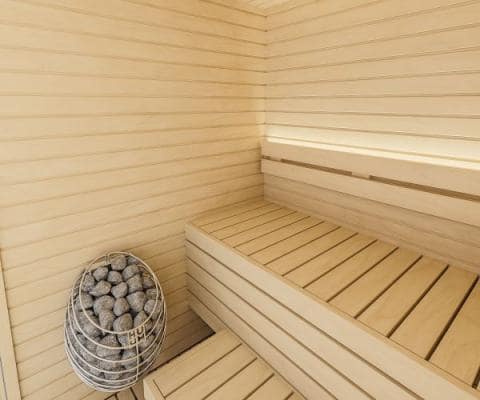Rumored Buzz on Traditional Sauna
Rumored Buzz on Traditional Sauna
Blog Article
The Traditional Sauna PDFs
Table of ContentsNot known Details About Traditional Sauna The 10-Second Trick For Traditional SaunaThe Traditional Sauna PDFsAll About Traditional SaunaFascination About Traditional Sauna
The majority of the weight lost in a sauna is water loss and is re-gained upon rehydrating. Without a question sauna can be a vital component of a healthy weight loss program. To consider the distinctions between standard and IR saunas, I will separate these right into proven, academic, and produced distinctions.Therefore, the best point in the saunawhich goes to the ceiling straight above the sauna heateris normally between 185 and 190 F. Claims that a standard sauna exceeds 200 F is just not real and not appropriate for electric saunas marketed in the US. The temperature for a far-infrared sauna is generally established between 120 and 140 F; however, unlike the traditional sauna, the objective in and IR space is not to attain a high temperature level.

When a traditional sauna has been appropriately heated up, the sauna wall surfaces are cozy, the air temperature has achieved established temperature and the rocks are super warmed. As an interesting side note, the warmed walls and the rocks are giving off far-infrared heat, integrated with the heated air, to produce an "covering warmth".
The 4-Minute Rule for Traditional Sauna
When the heat is achieved, the components cycle on and off to keep the high temperature. The majority of typical sauna users enjoy putting water over the rocks to develop vapor to elevate sauna humidity levels. The benefits of putting water over the rocks consist of: making the room more comfortable, moistening the nasal passages, and allowing the use of aromatherapy by mixing crucial oils with the water.

When the energy gets in the body, it creates the body temperature to enhance and inevitably leads to perspiration. In an infrared sauna it's essential for the emitters/heaters to stay on almost constantly. Since there is no mass of rocks to maintain warm, the sauna will cool if the emitters turned off.
5 Easy Facts About Traditional Sauna Explained
As discussed above, the sauna bather in an infrared room wishes to place himself in front of operating emitters to get optimal take advantage of the heat. The home heating time for both rooms can be really different, relying on how the rooms are utilized. For a conventional sauna, a bather should allow 30-40 mins for the space to achieve a preferred temperature level and to effectively pre-heat the rocks.

A well constructed sauna will usually accomplish a temperature of 150-160 F in regarding 30-40 minutes. For hotter temperatures, the space might need to warm for a longer period.
To some, 15 mins was "squandered" while the infrared power heated the wood panels as opposed to warming a body, while others locate a pre-heated area to be much more comfy and believe an elevated starting temperature level is required to begin sweating. The length of recommended use for every space is roughly the exact same (10-15 mins per session); however, because of the lower air temperature levels and the capability to really feel the effects of infrared warmth much faster than a typical sauna, it is not unusual for a person to spend a total amount of 20-30 minutes in an infrared sauna.
What Does Traditional Sauna Mean?

The ordinary price per kWH of electrical energy in the united state is around $0.11, so a 4.5 kW heater will set you back approximately $.50 to compete one hour, if the heating system runs constantly for one hour. Commonly a sauna heating unit will compete 75% of the very first hour and 50% of subsequent their explanation hours on considering that the components cycle once the established temperature level is accomplished.
A 2 person far-infrared space is typically literally smaller than a traditional sauna, frequently about 4' x 4' or smaller sized. The IR heater is commonly 1.5-1.7 kW using a 120 volt 15 amp plug-in service. Considering that the space can be utilized sooner than a sauna space, we will certainly assume the space is made use of for to of an hour including warm up time.
Finally, there is a rarely gone over difference in the social experience between both spaces. While our culture has actually shed several of the social benefit of the conventional sauna experience, it can be very socially rewarding (Traditional Sauna). From household time in the sauna, to heart-felt discussions with substantial others, to sauna partiesthe typical sauna experience Read Full Article can result in intimate mingling
Rumored Buzz on Traditional Sauna
Most greater end infrared areas include colored light therapy, noise systems and full-glass fronts.
Report this page